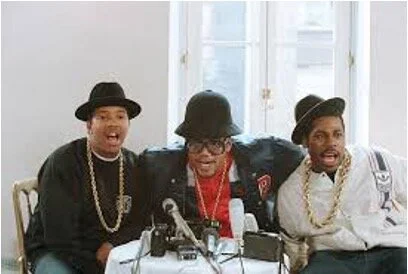The Evolution Of Black Voices In Music
…And in these days I realize that the strongest weapon I have is my voice. I realize that the melody in my laughter is powerful enough to make hell erupt into desperate prayers. My ancestors bent at the waist picking white gold, and even in pain, they knew song and praise. They knew that God was always listening, so they harmonized themselves into deliverance, into freedom, into marriage, into churches and clubs, stadiums, and arenas. This is why we get goosebumps every time a melody moves into the bloodstream. This is how we find home.
Photographed by Janine Robinson
I knew black music was different when a scat or a run would throw my body into a frenzy. It always felt like each note was crawling up my spine. My body would shiver as if I had just walked into a warm home after being in the cold for too long. I never understood it, but Nina Simone did, “Did you know that the human voice is the only pure instrument? That it has notes no other instrument has? It’s like being in-between the keys of a piano.” Finally, an explanation to the madness. An explanation to the indescribable feeling of being in-between.
If you aren’t familiar with the history of music or most importantly, the Harlem Renaissance era then the late and great Nina Simone has flown under your radar.
Nina Simone is one of the greatest voices to ever pioneer not only jazz but music culture in general. She was widely known as a civil rights activist, as well as a musician. If you were to ever ask Simone to describe the type of music she creates, the answer wouldn’t be shy of ‘black classical music’. Simone passed on April 2003, after living a timeless and dedicated life to the advancement of black voices in any and all spaces.
The concept of ‘being in-between’ that Simone proposes, is a vital component of why the black community holds music so dearly and how music has evolved. Simone describes the voice as an instrument that is able to communicate notes that seemingly fit in-between piano keys. Yet, the notes aren’t the only thing hidden in the voice. Black musicians have a talent for hiding in plain sight. A habit of stuffing deeper stories of trauma, love, and pain under and in-between melodies.
Take Harlem Renaissance music as an example. Musicians like Etta James, Billie Holiday, and Duke Ellington all share something in common: the feeling they invoke. Three different musicians with different stories and experiences, yet whenever that melody plays, something sounds and feels so familiar, and that familiarity never ceased.
Jump down to the ’50s and there we have Little Richard, Ray Charles, and Dinah Washington. Black culture invaded and created genres that wouldn’t have been popularized otherwise. People couldn’t stop it, nor believe it. Them white folks didn’t know about the in-between. They didn’t know the magic that God put in Black people’s voices.
Drop down to the 80’s and 90’s. Maybe the in-between didn’t have to be so hidden? Maybe our grievances needed to be vocalized? So, we did just that: vocalized, and out of our frustration came the most beautiful variation of poetry in motion. Hip-Hop became a movement based on being unapologetically Black in a landscape that made us feel unwanted and abused.
We said what we said, to the fullest capacity and with the utmost disrespect in some cases, but you know what? It didn’t matter. All that did matter, was the Black experience. As long as we as a collective understood the message, then it didn’t matter how obscene the lyrics were. Our TVs and stereos would drown everything out just the same.
Now here we are, defining and creating a culture that originally dehumanized us. Oh, how the tables have turned. From country to rap, we have blessed the sound system and the stage. No longer are the days of back door entrancing. The evolution of Black voices in music is truly the story of music in America as a whole. We praise white artists who have stolen from black musicians and expect our story to be told.
I now listen to music with a new sense of appreciation for the past pioneers and game-changers. I allow all the sensations to manifest in my body as it harbors a melody. All the memories of my mother crying to gospel, my grandfather singing to Lenny Williams, or just simply my family doing the electric slide to ‘Candy’ by Cameo, all make sense. The ‘in-between’ that Nina Simone mentions, is an unseen truth that only Black people get to understand. It’s able to connect and relate to any situation and feeling.
This is why we get goosebumps every time a melody moves into the bloodstream. This is how we triumph.
(Pictured) Run DMC via Britannica



